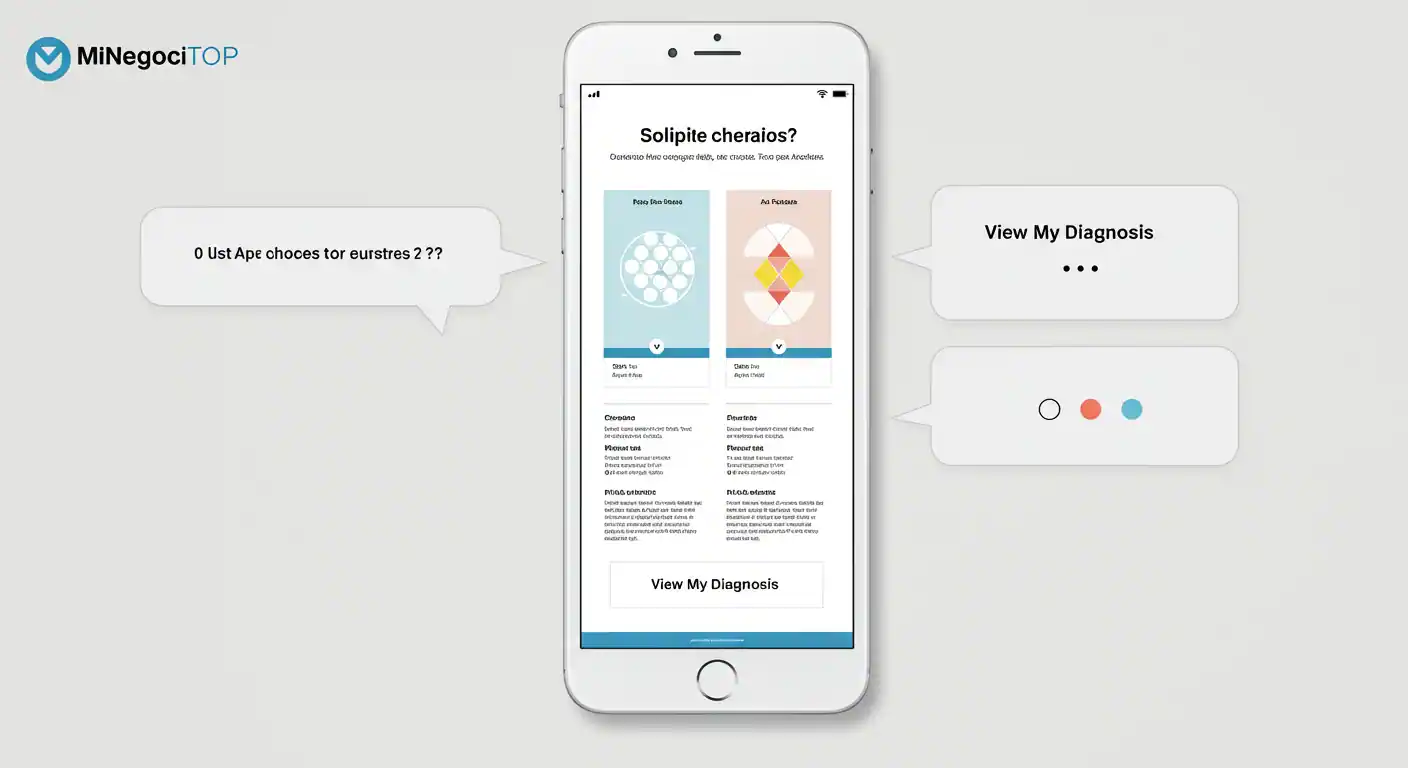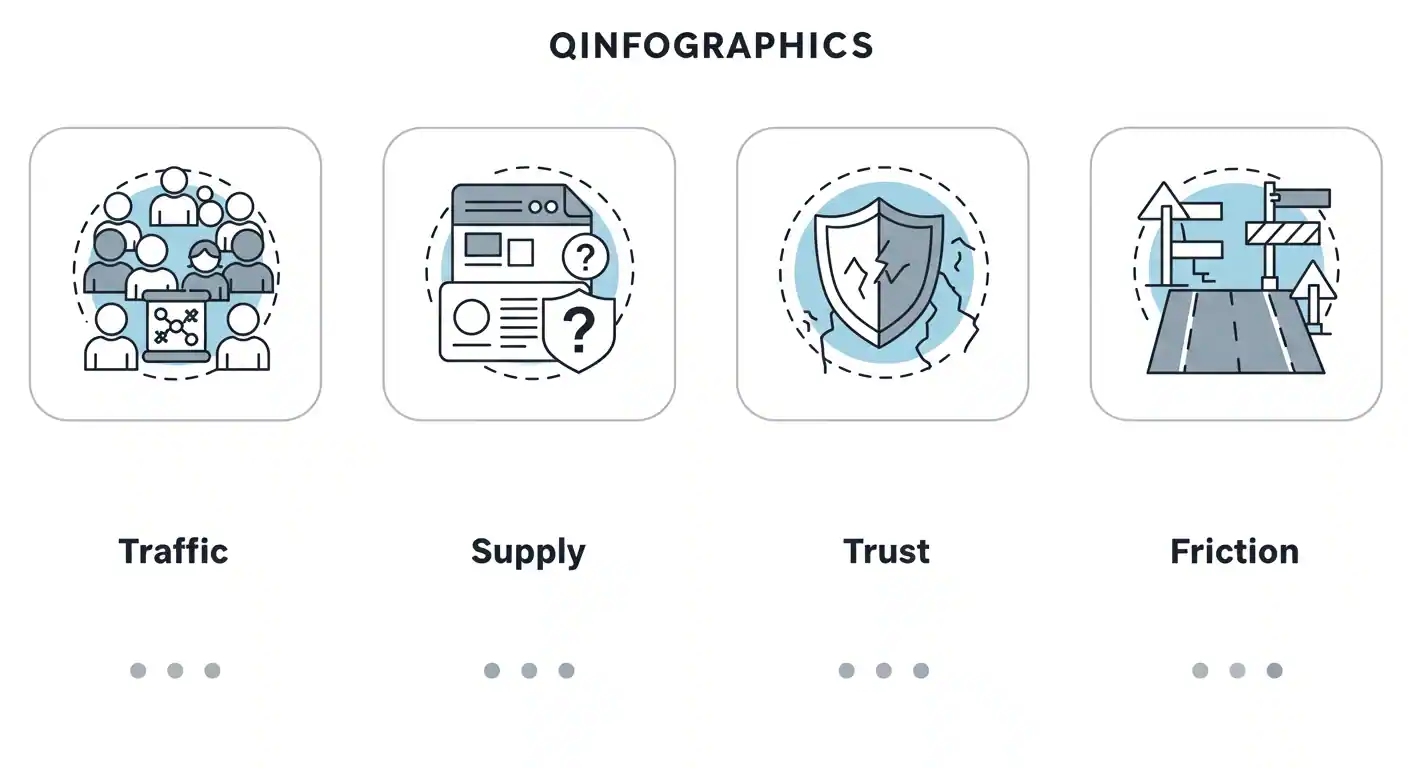Sales Diagnosis: Why Your Business Isn’t Selling Enough
(And the 30-Day Plan to Fix It)

At BusinessTopUSA.com, based on our hands-on experience diagnosing and solving sales challenges for American small and medium businesses (SMBs), we’ve created this definitive guide. We won’t give you generic advice like “post more on social media.” Instead, we’ll provide you with a proven diagnostic method to pinpoint the real root cause of your sales struggles.
By the end of this guide, you’ll not only understand exactly why you’re not hitting your sales targets, but you’ll have a concrete 30-day action plan to start turning things around.
The Uncomfortable Truth: “More Sales” Is Rarely the Right Solution

When sales drop, our first instinct is “I need more digital marketing!” We dump money into Facebook Ads, hire social media managers, slash prices, and often see disappointing (and expensive) results.
Why This Reactive Approach Backfires:
- Attracts Wrong-Fit Customers: If your value proposition isn’t clear, more marketing just brings more people who aren’t ready to buy.
- Burns Your Marketing Budget: Investing in Google Ads or Facebook Ads without fixing a broken landing page is like pouring money down the drain.
- Frustrates Your Team: Asking your team to “sell harder” without giving them a clear system or compelling offer creates burnout and turnover.
- Masks the Real Problem: Poor sales are a symptom, not the disease. It could be a pricing issue, trust problem, product positioning, or process friction.
From our perspective, before you invest another dollar in customer acquisition, you need to ensure your “sales house” is in order. This guide shows you exactly how to do that.
Take Action NOW: Diagnose Your Sales Bottleneck

INTERACTIVE ACTION MODULE: Quick Sales Diagnosis
Use this interactive tool to get your first rapid diagnosis. Your honest answers will help us identify where your biggest opportunity for improvement lies.
1. Which statement best describes your main challenge?
2. If a potential customer lands on your website, how easy is it for them to understand in 5 seconds what you sell and why you’re their best choice?
3. How easy is your purchase or contact process?
The 4 Horsemen That Kill Your Sales (And How to Defeat Them)

Based on our experience with U.S. businesses, nearly all sales problems can be categorized into these four areas. Identify yours below.
1. The TRAFFIC Problem (The Desert): “Nobody Knows I Exist”
Diagnosis: Your sales process is too long, confusing, or difficult to navigate.
- Audit Your Purchase Process: Have a friend try to buy from your website and note where they get stuck. Reduce clicks and form fields to the absolute minimum.
- Mobile Optimization: Most customers will visit you on mobile. Ensure your mobile purchase experience is flawless.
- Multiple Contact Channels: Offer WhatsApp Business, live chat, or Calendly for easy scheduling.
Your Strategic 30-Day Action Plan
Based on your diagnosis from the interactive module above, here’s your suggested action plan. Don’t try to do everything—pick the plan that aligns with your main bottleneck.
| If your problem is… | Week 1: Analysis & Planning | Week 2: Quick Optimization | Week 3: Key Implementation | Week 4: Measurement & Adjustment |
|---|---|---|---|---|
| TRAFFIC | Research 10 keywords your customers use. Fully optimize your Google Business Profile with photos, hours, and services. | Write and publish your first blog post answering a key customer question. Set up Google Analytics and Google Search Console. | Launch a mini test campaign ($100-200) on Facebook Ads or Google Ads targeting your ideal local customer. | Measure traffic sources in Google Analytics. Which brought the most qualified visitors? What did you learn from your ad campaign? |
| OFFER | Interview 3 current customers about why they chose you over competitors. Define your unique value proposition clearly. | Rewrite your homepage headline and first paragraph with your new, clear value proposition. A/B test if possible. | Create an irresistible offer (service bundle, money-back guarantee, or free consultation) and promote it across all channels. | Track conversion rates using Google Analytics goals. Have inquiries or sales increased with your new offer? |
| TRUST | Set up a review request system. Contact 5 past customers and request testimonials for Google, Yelp, and your website. | Add a testimonials section to your homepage and sales pages. Install trust badges and display your business credentials. | Record a short, authentic video sharing your business story and “why.” Post it on your website and social media. | Monitor trust signals: increased time on site, lower bounce rate, fewer abandoned shopping carts using Google Analytics. |
| FRICTION | Complete audit of your purchase process from start to finish. Document every step and potential confusion point. | Reduce contact form fields to maximum 3. Optimize website speed using Google PageSpeed Insights. Test mobile experience thoroughly. | Implement low-friction sales channels: Calendly for appointments, WhatsApp Business for quick questions, or one-click purchasing. | Measure cart abandonment rate and form completion percentages. Use Google Analytics to track improvement in conversion funnel. |
From the Trenches: Sales-Unlocking Tips That Actually Work
Your Common Sales Questions Answered (FAQ)
Your Next Step: From Diagnosis to Action and Profitability
You no longer have to guess why your business isn’t selling at the level you want. With this guide, you have a systematic diagnostic approach and a clear 30-day action plan to attack the root cause of your sales challenges.
Choose the “horseman” that’s most affecting your business, implement the 30-day plan, and start measuring results. The key to sustainable growth lies in informed action, not random tactics.
Remember: every successful American business started exactly where you are now. The difference is they diagnosed their problems accurately and took systematic action to fix them.
If this content provided value and actionable insights, share this article with other business owners who could benefit from optimizing their sales process.
